Are you a Quiet Speculation member?
If not, now is a perfect time to join up! Our powerful tools, breaking-news analysis, and exclusive Discord channel will make sure you stay up to date and ahead of the curve.
Last week, I suggested Grixis Death’s Shadow as one of a shortlist of archetypes that I felt was strongly positioned against the major players in the format. A combination of disruption, cheap threats, and a proactive gameplan that can mold to fit a variety of matchups seemed very appealing in a Modern format full of fast, powerful opponents, all pursuing various strategies.

Not one to avoid my own advice, I felt it necessary to pick up the deck myself and see what it had to offer. So, this week's article discusses Grixis Death's Shadow specifically, but overall I’ll be looking at the format critically, with an eye towards how best to attack the field as it stands today.
The Premise
To begin a discussion on Grixis Death’s Shadow, it’s important to outline what drew me to the archetype in the first place. Without a clear question in mind, like “does this deck effectively attack the top strategies while presenting its own powerful gameplan,” it can be difficult to objectively evaluate performance. Elves, for example, "does its thing” pretty consistently, but who’s to say we’re in the market for what Elves brings to the table?
It seems like basic, self-explanatory stuff to put into writing, but oftentimes just making a list, or jotting down bullet-point observations about the format, can go a long way towards asking the right questions. We don’t have ages to find the right archetypes to test against a specific field, as oftentimes the window of opportunity can open and close within a matter of days. Starting the race halfway down the track might sound like cheating, but if all we’re doing is getting a clear picture of readily available information, you have to ask yourself: why haven’t I been doing this all along?
So, with that being said, the structure of this article will break down into three sections. First, I'll give an overview of what I like about Grixis Death's Shadow, followed by an in-depth breakdown of my experiences against the top decks. To close, we'll bring it all together into a definitive conclusion about the archetype.
Untitled Deck
An Overview
As a quick aside, last week I got some helpful feedback indicating confusion about which metagame I was talking about. In most of my articles, I refer to the Magic Online metagame by default. The MTGO metagame is usually a couple weeks ahead of the paper metagame, and slightly more aggro-slanted. Moving forward, I'll do a better job of specifying this in each article that deals with the MTGO metagame specifically, but as a general rule, most of my articles will be geared towards the MTGO metagame (in other words, the possible near-future paper metagame).
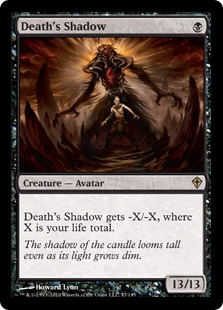 So, Grixis Death’s Shadow. Last week, we outlined the major players in the format as Affinity, Eldrazi Tron, and Dredge. Grixis Death’s Shadow was one of three archetypes that came to mind as being strongly positioned against both the top decks, and the majority of the field, and I felt it warranted a deeper look. To summarize, Grixis Death's Shadow:
So, Grixis Death’s Shadow. Last week, we outlined the major players in the format as Affinity, Eldrazi Tron, and Dredge. Grixis Death’s Shadow was one of three archetypes that came to mind as being strongly positioned against both the top decks, and the majority of the field, and I felt it warranted a deeper look. To summarize, Grixis Death's Shadow:
- Is a faster, more proactive version of Grixis Control, trading its top end for a quick clock.
- Upgrades weak creatures and situational tempo spells from Grixis Delver into a reliable, powerful shell.
- Positions itself between fast aggro and grindy control, while retaining elements of both.
- Employs removal, permission, and cheap/robust threats to survive against control.
- Possesses the best sideboard options outside of white.
Playing a few matches with the deck confirmed most of these initial impressions. Against aggro, 4 Fatal Push and 2 Lightning Bolt is a strict upgrade to some number of Terminate, as killing enemy threats at mana parity helps greatly in the tempo department. Assuming we can stabilize, our cheap threats boast bodies big enough to gum up the ground long enough for us to find a second creature and start attacking, without having to worry about killing everything.
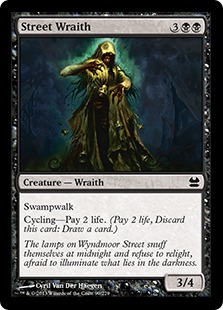 The downside, of course, is that while our creatures usually cost B, each comes with a restriction. Death's Shadow can be stranded in hand if we don’t have a Street Wraith to help out, and while opponent will usually play along and help us below 13 life, we sometimes end up in an awkward position where we’d rather play Death's Shadow now, but must must wait a turn.
The downside, of course, is that while our creatures usually cost B, each comes with a restriction. Death's Shadow can be stranded in hand if we don’t have a Street Wraith to help out, and while opponent will usually play along and help us below 13 life, we sometimes end up in an awkward position where we’d rather play Death's Shadow now, but must must wait a turn.
Gurmag Angler is a fine creature as well, but sometimes having to wait until turn 3 to cast it, or having to cast Thought Scour under fire first, can feel strange. We’d often rather interact with the board than do those things. You could make a case for Gurmag Angler just costing UB in those situations (the Thought Scour plus its own casting cost), but especially in a deck with 19 lands, we’d much rather use that early mana on other spells.
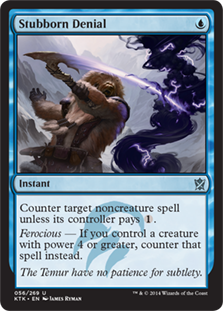 Against combo, Thoughtseize into threat into Stubborn Denial is about as good as it gets. Discard backed up by a quick clock and counterspells is the dream, and this deck assembles the combination more reliably than Grixis Delver ever could. Supported by ample sideboard room for options like Fulminator Mage and Surgical Extraction, Grixis Death’s Shadow is well-positioned to handle most of the unfair strategies in the format (besides Bogles, which is somehow still kicking around).
Against combo, Thoughtseize into threat into Stubborn Denial is about as good as it gets. Discard backed up by a quick clock and counterspells is the dream, and this deck assembles the combination more reliably than Grixis Delver ever could. Supported by ample sideboard room for options like Fulminator Mage and Surgical Extraction, Grixis Death’s Shadow is well-positioned to handle most of the unfair strategies in the format (besides Bogles, which is somehow still kicking around).
The downside, of course, are those opponents who can capitalize on our cavalier approach self-damaging. Burn is an absolute nightmare, and Affinity can be difficult to beat if we get off to a slow start. That being said, let’s move forward into individual matchup breakdowns.
Affinity
On paper, in theory, or whatever other cliché you’d like to use, this matchup looks great. Upgrading from Terminate to Fatal Push is even better when our opponent is playing multiple 1 and 0 costs creatures on turn 1 instead of one guy. A couple removal spells, backed up by Kolaghan's Command, followed quickly by a fast threat should be enough to take over.
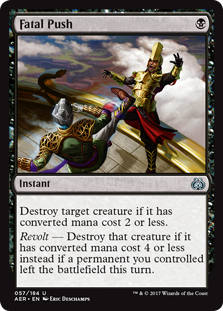 In reality, this example scenario happens most of the time, but disaster can still strike. It's possible to miss on one of our six one-mana removal spells in our opener, leaving us with awkward creatures that don’t block Affinity’s and a whole lot of air. 19 land and some greedy spell costs price us into grabbing at least one shockland, and we can get run over before stabilizing.
In reality, this example scenario happens most of the time, but disaster can still strike. It's possible to miss on one of our six one-mana removal spells in our opener, leaving us with awkward creatures that don’t block Affinity’s and a whole lot of air. 19 land and some greedy spell costs price us into grabbing at least one shockland, and we can get run over before stabilizing.
A lot of lists online are running Kozilek's Return over Anger of the Gods, which is pretty much a necessity thanks to our manabase. Casting Anger means fetching two shocks, as we’re not running basic Mountain, which doesn’t really help cast anything else in our deck. This version of Grixis Death’s Shadow is UB-based, evidenced by its mere two copies of Lightning Bolt. Anger of the Gods is clearly better than Return, but we can’t afford it. Luckily, Return pulls extra weight against Affinity, where it blows out mid-combat modular dumps, slays infecting manlands, and kills Etched Champion.
The big issue with this matchup is that Affinity positions itself to be great against discard, and we relying on our discard as a turn one play. We can cast Fatal Push instead, but in the draws where we don’t see Push, this shortcoming comes into focus. Affinity also mostly dodges Stubborn Denial, our main catch-all answer to most problems. Still, a little bit of sideboard help should be all we need to handle the little robots.
Eldrazi Tron
Were this a regular Tron deck, our gameplan would be simple: Thoughtseize a thing, play a threat, and keep them behind with Fulminator Mage and Stubborn Denial. The fact that they get to play their top end and have relevant beaters like Thought-Knot Seer and Reality Smasher a turn faster than they should makes things really difficult for us. Go too reactive and they’ll run us over with the creature half of their deck. Load up on removal and die to their top end. Eldrazi Tron gets to benefit from so much incidental text on their spells that trying to play fair starts to seem like a ridiculous uphill battle.
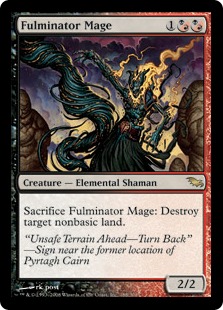 So, don’t play fair. Our clearest path to victory is the simplest one: drop a threat and beat down for four turns. Stubborn Denial and Fulminator Mage won’t quench our opponent's unending value stream, but making them stumble for a turn or two might be all we need to put the game away.
So, don’t play fair. Our clearest path to victory is the simplest one: drop a threat and beat down for four turns. Stubborn Denial and Fulminator Mage won’t quench our opponent's unending value stream, but making them stumble for a turn or two might be all we need to put the game away.
As much as Lightning Bolt doesn’t do much in the matchup, keeping it in post-board can often be the difference between winning and losing. Six damage with a Snapcaster Mage in the mix speeds up our clock by a full turn—just beware of Relic of Progenitus. And Chalice of the Void. And the rest of their deck.
Dredge
Luckily, Dredge isn’t too much trouble for us, assuming we find Surgical Extraction. I’m not a fan of Nihil Spellbomb, as we’re really only looking to nab Bloodghast and Prized Amalgam. Extraction does all we need it to do, and Snapping it back slows Dredge to a laughable crawl. Nihil Spellbomb is a little less impactful, meaning we probably have to play two in addition to a copy of Surgical Extraction in the board.
So, why not just play 2 Surgical Extraction and save ourselves the extra sideboard slot? I’ve seen some players bring Spellbomb in for mirror matches, but I’m amazed they find enough cards to trim for it, and I don’t think it's very good. Fatal Push and Stubborn Denial are what that matchup revolves around.
Conclusion
Against the big three in the online metagame, Grixis Death's Shadow performs about how you would expect, but there are some nuances and traps to avoid in specific matchups. The deck isn’t perfect, and by playing with our life total we literally are playing with fire (no Burn pun intended) but overall I’m pleased with how it performs against the field.
Outside of the big three, most matchups go relatively the same way depending on macro-archetype, but beware of strategies that are really far left of field. Storm can be difficult if we don’t see discard, and every matchup goes smoother if our creatures come down quickly. I’ve learned the hard way not to play Grixis Death's Shadow like a control deck, but I have found success with some Vendilion Clique-like effects in the board. Good luck, and let me know how you are attacking the format!


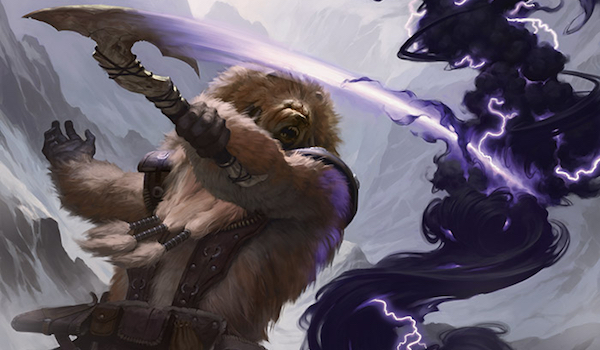



Not running any copies of TBR in your 75 is a huge mistake, I think. I would cut Fulminator for them.
Nice article there
How would you sideboard in the mirror?
Also, not having any TBR is bad, I think. This card have won me several matches I had no business winning.
I’m also curious about TBR. I personally just love the card and will try to force it wherever it’s semi-reasonable, but it seems to give Grixis Death’s Shadow more play against clogged boards full of weenies. Aside from that, how do people feel about Rakdos Charm in the sideboard? I run my Grixis Death’s Shadow a little more red heavy to play Anger and Rakdos in the sideboard.